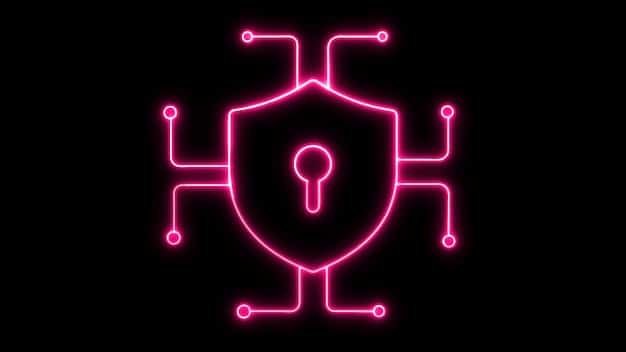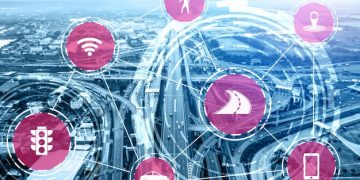US Infrastructure Cyber Threats Up 35% in Q1 2025: An Urgent Security Brief

A stark 35% increase in cybersecurity threats to US critical infrastructure during Q1 2025 signals an escalating national security crisis, demanding urgent and comprehensive protective measures to safeguard essential services and maintain societal stability.
The digital age, while offering unprecedented connectivity and efficiency, also presents a darker side: an ever-present and evolving threat landscape. Recently, an alarming report indicated that cybersecurity threats to US infrastructure increased by 35% in Q1 2025, ringing alarm bells across government agencies, private sectors, and individual citizens alike. This substantial rise is not merely a statistic; it represents a tangible risk to our daily lives, from the power grid that lights our homes to the financial systems that keep our economy flowing.
The Escalating Threat Landscape: Why Q1 2025 is a Critical Juncture
The first quarter of 2025 has brought with it a significant escalation in the digital battleground, marking a concerning trend for the United States’ critical infrastructure. This isn’t a slow creep but a noticeable surge, demanding immediate attention and a re-evaluation of current defense postures. Understanding the drivers behind this heightened threat level is crucial for developing effective countermeasures.
Understanding the Nature of the Attacks
The types of attacks observed in Q1 2025 were varied and sophisticated, indicating a multifaceted approach by malicious actors. From ransomware disrupting operational technology (OT) systems to advanced persistent threats (APTs) targeting intellectual property and sensitive data, the spectrum of attacks has broadened significantly. These aren’t just IT-level breaches; they are designed to directly impact physical processes and services.
The increase of 35% points to several underlying factors. Geopolitical tensions often correlate with a rise in state-sponsored cyber activities, as nations seek to gain strategic advantages or disrupt adversaries. Furthermore, the proliferation of sophisticated hacking tools and methodologies on the dark web makes it easier for less skilled actors to launch damaging attacks. This democratization of cyber weaponry lowers the barrier to entry, expanding the pool of potential threats.
One primary concern revolves around the interconnectedness of modern infrastructure. What might traditionally have been isolated operational systems are now increasingly linked to broader IT networks for efficiency and data sharing. While beneficial, this integration creates new pathways for cyber adversaries to exploit, turning what was once a localized vulnerability into a potential systemic failure. For instance, a breach in an administrative network could potentially lead to control system manipulation if proper segmentation and security protocols are not rigorously enforced.
- Ransomware Resilience: Attacks are becoming more targeted and effective, often bypassing traditional defenses.
- Supply Chain Vulnerabilities: Exploitation of third-party vendors and software providers provides backdoor access.
- Advanced Persistent Threats (APTs): State-sponsored groups are demonstrating enhanced capabilities and patience.
- Insider Threats: Disgruntled employees or compromised credentials remain a significant vector.
This confluence of factors—geopolitical instability, technological advancements in offensive cyber capabilities, and inherent architectural vulnerabilities within interconnected systems—has collectively contributed to the significant uptick in incidents. It underscores the urgent need for a layered defense strategy that addresses not only external threats but also internal weaknesses and supply chain risks. The current environment necessitates a proactive, intelligence-driven approach that anticipates potential attacks rather than merely reacting to them.
Key Infrastructure Sectors Under Siege: A Closer Look at Vulnerabilities
The broad term “US infrastructure” encompasses a vast array of interconnected systems vital to national function and citizen well-being. The reported 35% increase in cyber threats impacts specific sectors disproportionately, exposing critical vulnerabilities that malicious actors are keen to exploit. Understanding which sectors are most at risk and why is essential for targeted defense strategies.
Energy Grids and Utilities
The energy sector, particularly the electric grid, remains a prime target due to its fundamental role in society. Disrupting power can cause widespread chaos, impacting everything from healthcare to communications. Attacks often aim at industrial control systems (ICS) and supervisory control and data acquisition (SCADA) systems, which regulate the flow of electricity. These legacy systems, often designed for reliability rather than advanced security, present significant vulnerabilities. The consequences of such attacks can range from localized power outages to regional blackouts, threatening public safety and economic stability. Recent incidents have shown increasingly sophisticated attempts to manipulate grid operations, not just gather intelligence.
The reliance on interconnected smart grid technologies, while improving efficiency, also expands the attack surface. Every sensor, smart meter, or remote access point represents a potential entry point for adversaries. Furthermore, the increasing integration of renewable energy sources with central grids introduces new complexities and potential vulnerabilities, as these systems may not always be as robustly secured as traditional infrastructure. Protecting this sector requires a holistic approach, blending physical security with advanced cyber defenses and continuous threat monitoring.
Water and Wastewater Management
Though often overlooked, the water sector is equally critical and increasingly vulnerable. Attacks on water treatment facilities or distribution networks could lead to contaminated water supplies, service disruptions, or even public health crises. Many water utilities operate with limited cybersecurity budgets and outdated equipment, making them easier targets for even less sophisticated attackers. Malware designed to disrupt pumping stations or alter chemical levels could have immediate and severe public health implications. The focus here is often on maintaining continuous service and ensuring water quality, which often means that cybersecurity is a secondary consideration until an incident occurs.
Healthcare and Public Health Services
The healthcare sector faces a unique set of challenges. Beyond the financial impact of ransomware, attacks on hospitals and healthcare systems can directly endanger lives by disrupting patient care, blocking access to medical records, or disabling critical equipment. The sheer volume of sensitive patient data also makes healthcare organizations attractive targets for data theft and extortion. The rush to digitalize medical records and services, coupled with a typically less mature cybersecurity posture than other industries, creates a fertile ground for exploitation. The sector’s distributed nature, with numerous small clinics and specialist facilities, further complicates a unified defense strategy.
Transportation Systems
From air traffic control to railway networks, transportation systems are integral to moving people and goods. Cyberattacks could lead to delays, collisions, or even paralyze entire logistical chains. Modern transportation relies heavily on digital signaling, communication, and control systems, all of which are potential targets. The consequences can be catastrophic, impacting national commerce, emergency services, and individual mobility. Consider the ripple effect of a major port being unable to process cargo due to a ransomware attack, or an airport’s control tower being compromised. These scenarios highlight the profound societal and economic ramifications of successful cyber intrusions in this sector.

Common Attack Vectors and Emerging Threats in Q1 2025
The substantial increase in cyber threats to US infrastructure in Q1 2025 is a clear indicator that adversaries are evolving their tactics and exploiting new avenues of attack. Recognizing these common vectors and emerging threats is paramount for developing effective defensive strategies. It’s no longer just about guarding against known vulnerabilities; it’s about anticipating the next move.
Phishing and Social Engineering
Despite technological advancements in cybersecurity, human error remains one of the most widely exploited vulnerabilities. Phishing attacks, where adversaries attempt to trick individuals into revealing sensitive information or clicking malicious links, continue to be highly effective. In 2025, phishing has become even more sophisticated, often leveraging artificial intelligence to craft highly personalized and convincing emails or messages (spear phishing) that bypass traditional spam filters. Social engineering tactics convince employees to divulge critical information or grant unauthorized access, exploiting trust and urgency. These attacks often serve as the initial entry point for more complex cyber campaigns.
The sheer volume and increasing sophistication of these attempts make them a persistent threat. Training and awareness programs are crucial, but continuous vigilance is required. Employees need to be equipped to identify even subtle anomalies in communications, understanding that a single click can compromise an entire system. Furthermore, multi-factor authentication (MFA) and robust access controls are essential safeguards against successful social engineering attempts, even if credentials are stolen.
Supply Chain Attacks
One of the most insidious and growing threats comes from supply chain attacks, which saw a significant uptick in Q1 2025. Instead of directly targeting the critical infrastructure organization, adversaries compromise a less secure third-party vendor or software provider that the organization relies upon. This allows them to piggyback into the target’s systems. From software updates tainted with malware to hardware components embedded with backdoors, the supply chain offers numerous potential entry points. The SolarWinds attack in 2020 served as a stark reminder of how a single compromise in a widely used software can have cascading effects across thousands of organizations, including government agencies and critical infrastructure providers.
Protecting against supply chain attacks is challenging because it requires trust and rigorous vetting of every link in the chain. Organizations must demand high cybersecurity standards from their vendors, implement robust supplier risk management programs, and continuously monitor for suspicious activity originating from third-party connections. This extends beyond software to hardware, services, and even cloud providers that handle sensitive data or processes.
Zero-Day Exploits
Zero-day exploits, which leverage software vulnerabilities unknown to the vendor or the public, remain a high-value tool for sophisticated attackers, including state-sponsored groups. These exploits are particularly dangerous because there are no patches or immediate defenses available until the vulnerability is discovered and fixed. The rapid increase in Q1 2025 suggests that more resources are being dedicated to discovering and weaponizing these unknown flaws.
Defending against zero-day exploits requires advanced threat intelligence, anomaly detection capabilities, and adaptive security architectures. Organizations must invest in sophisticated security solutions that can identify unusual behavior and potential exploitation attempts even without specific signature-based detection. This includes deploying advanced endpoint detection and response (EDR) systems, network traffic analysis tools, and behavioral analytics. Proactive threat hunting also plays a vital role in identifying signs of compromise before a zero-day attack can fully mature.
Attacks Targeting Operational Technology (OT)
While IT systems have historically been the primary target, Q1 2025 saw a notable surge in attacks specifically targeting Operational Technology (OT) and Industrial Control Systems (ICS). These are the systems that control physical processes in critical infrastructure, such as power plants, water treatment facilities, and manufacturing plants. Historically, OT networks were air-gapped from IT networks, providing a layer of security through isolation. However, increasing convergence between IT and OT for efficiency and data analytics has blurred these lines, creating new attack vectors.
Successful breaches of OT systems can lead to physical damage, disruption of services, and even direct threats to human life. Adversaries are developing specialized malware designed to interact with and manipulate industrial protocols. Securing OT requires a deep understanding of these unique systems, their vulnerabilities, and the potential impact of attacks. It necessitates implementing robust network segmentation, continuous monitoring of OT networks, and specialized incident response plans that account for the unique operational constraints of industrial environments.
The Economic and Societal Ripples of Cyber Disruptions
The escalation in cybersecurity threats to US infrastructure, particularly the 35% increase observed in Q1 2025, carries profound implications far beyond the digital realm. These aren’t merely technical incidents; they are events with significant economic and societal repercussions, capable of disrupting daily life, eroding public trust, and undermining national stability. Understanding these wider impacts is key to grasping the urgency of the situation.
Immediate Economic Costs
The most direct impact of a cyberattack is the financial cost. This includes the expenses associated with incident response, such as forensic analysis, system recovery, and data restoration. Beyond these immediate outlays, organizations face significant indirect costs like business interruption, lost revenue due to downtime, and potential fines from regulatory bodies for data breaches or non-compliance. Ransomware payments, while sometimes necessary to regain access to systems, also represent a direct financial drain that can run into millions of dollars. The reputational damage suffered by affected organizations can also lead to long-term economic consequences, as customers and partners lose trust.
Supply Chain Disruption
Modern economies are built on complex, interconnected supply chains. A cyberattack on a single critical infrastructure component can trigger a cascade of failures across various sectors. For example, a successful attack on a major port’s operational systems could halt the flow of goods, impacting manufacturing, retail, and ultimately, consumer availability. Similarly, a disruption to the energy grid could cripple factories, transportation networks, and communication systems, leading to widespread production halts and economic stagnation. These ripple effects extend globally, as international trade and supply lines are increasingly interdependent. The inherent vulnerability of just-in-time logistics means that even short-term disruptions can have disproportionate impacts on product availability and pricing.
The fragility of these supply chains has been highlighted repeatedly in recent years, first by the pandemic and now by escalating cyber threats. A focus on resilience and diversification within supply chains is becoming paramount, moving away from single points of failure. This also includes ensuring that vendors and partners within the supply chain adhere to stringent cybersecurity standards to prevent future compromises that could reverberate throughout the economic ecosystem.
Erosion of Public Trust and Morale
Beyond the tangible economic and operational impacts, cyberattacks on critical infrastructure can significantly erode public trust in government institutions and private enterprises. When essential services like electricity, water, or healthcare are disrupted due to a cyber incident, it undermines citizens’ confidence in the reliability and security of these systems. This erosion of trust can lead to public anxiety, reduced investment, and even social unrest if prolonged or widespread. The perception of vulnerability can be as damaging as the actual attack, affecting national morale and internal stability. Maintaining public confidence through transparent communication and demonstrable protective measures is crucial.
National Security Implications
At the highest level, cyberattacks on infrastructure carry grave national security implications. They can disrupt military logistics, compromise intelligence operations, or directly impact command and control systems. In a geopolitical context, such attacks can be used as a form of hybrid warfare, undermining an adversary’s capabilities without resorting to conventional conflict. The ability to disrupt power grids or communication networks could severely impede a nation’s response to a crisis, whether natural disaster or military threat. Therefore, robust cybersecurity for critical infrastructure is not just an economic or social imperative but a cornerstone of national defense. A weakened infrastructure due to cyber interference makes a nation more susceptible to external pressures and influence.
Strengthening Defenses: Proactive Measures and Policy Responses
In the face of a 35% surge in cybersecurity threats to US infrastructure in Q1 2025, a reactive approach is no longer sustainable. A comprehensive, proactive strategy involving technological advancements, policy adjustments, and collaborative efforts is urgently needed to fortify defenses and enhance resilience. This multi-pronged approach must be agile, recognizing that the threat landscape is constantly evolving.
Enhanced Threat Intelligence Sharing and Collaboration
One of the most critical steps is to improve the timely sharing of threat intelligence between government agencies, critical infrastructure operators, and private cybersecurity firms. Organizations often possess unique insights into specific attack methodologies or vulnerabilities that, if shared, could benefit the entire ecosystem. Platforms like the Cybersecurity and Infrastructure Security Agency (CISA) act as central hubs, but mechanisms for more fluid, real-time exchange of indicators of compromise (IOCs) and attack signatures need to be strengthened.
Furthermore, fostering a culture of collaboration, rather than competition, within the private sector is vital. Companies that have experienced breaches should be encouraged to share anonymized data and lessons learned to prevent similar incidents elsewhere. This collective defense strategy enhances the overall security posture of the nation, making it harder for adversaries to exploit the same vulnerabilities across different targets. International collaboration with allies to share intelligence and coordinate responses to global cyber threats also plays a significant role.
Investing in Advanced Cybersecurity Technologies
Technological innovation is key to staying ahead of sophisticated adversaries. This includes:
- AI-Driven Anomaly Detection: Deploying artificial intelligence and machine learning to identify unusual network behavior and potential intrusions that bypass traditional signature-based detection.
- Zero-Trust Architectures: Implementing security models that require strict verification for every user and device attempting to access network resources, regardless of their location, reducing the risk of unauthorized access.
- Quantum-Resistant Cryptography: Beginning the transition to cryptographic solutions that can withstand attacks from future quantum computers, protecting long-term data confidentiality.
- Automated Breach Response: Developing systems that can automatically detect, contain, and in some cases, remediate cyber threats with minimal human intervention, reducing response times.
These technologies, however, require skilled personnel to deploy and manage them effectively. Investment in human capital and continuous training are equally important.
Robust Regulatory Frameworks and Incentives
Government policy plays a crucial role in driving cybersecurity improvements across critical infrastructure. This could involve:
* Mandatory Cybersecurity Standards: Establishing and enforcing minimum cybersecurity standards for critical sectors, similar to those seen in the finance or healthcare industries. These standards should be regularly updated to reflect new threats.
* Incentives for Adoption: Offering tax breaks, grants, or other financial incentives for organizations to invest in advanced cybersecurity solutions and training.
* Cyber Resilience Mandates: Requiring organizations to not only prevent attacks but also to develop robust recovery and continuity plans to minimize the impact of successful breaches. This includes regular testing of incident response procedures.
* Clear Liability and Reporting Guidelines: Defining clear rules around liability for cyber incidents and establishing streamlined mandatory reporting requirements to ensure transparency and accountability.
Workforce Development and Training
The persistent shortage of skilled cybersecurity professionals is a significant impediment to strengthening defenses. Addressing this requires a multi-faceted approach:
* Educational Pipeline: Investing in STEM education from K-12 through university levels to cultivate a new generation of cybersecurity talent.
* Reskilling and Upskilling Programs: Creating accessible programs for professionals from other fields to transition into cybersecurity roles, and providing continuous training for existing cybersecurity staff.
* Public-Private Partnerships: Collaborating with private industry to develop relevant curricula and provide internship opportunities that bridge the gap between academic learning and real-world application.
* Attracting Diverse Talent: Actively recruiting individuals from diverse backgrounds, leveraging different perspectives and skill sets to enrich the cybersecurity workforce.
A well-trained and adequately staffed cybersecurity workforce is the backbone of any robust defense strategy. Without sufficient human expertise to implement, manage, and evolve security measures, even the most advanced technologies will fall short.
Resilience and Recovery: Beyond Prevention
While prevention is paramount, the reality of cybersecurity in 2025 dictates that some attacks will inevitably succeed. The 35% increase in threats to US infrastructure in Q1 2025 underscores that focusing solely on blocking intrusions is insufficient. Building resilience and ensuring rapid recovery capabilities are equally critical components of a comprehensive national cybersecurity strategy. This involves shifting from an “if” to a “when” mentality regarding cyber incidents.
Developing Robust Incident Response Plans
Every critical infrastructure organization must have a well-defined, regularly tested incident response plan. This plan should detail:
* Detection and Alerting: How unusual activity is identified and reported rapidly.
* Containment: Steps to isolate affected systems and prevent further spread of the attack.
* Eradication: Procedures for removing the threat from affected systems.
* Recovery: Steps to restore systems and data from backups, ensuring business continuity.
* Post-Incident Analysis: Learning from the incident to improve future defenses and processes.
These plans should be practiced through tabletop exercises and live simulations, involving not just IT and OT teams but also leadership, legal, and public relations personnel. The goal is to minimize downtime and the overall impact on services.
Redundancy and Diversification of Systems
Building resilience means designing infrastructure systems with redundancy and diversification in mind. This includes:
* Geographic Dispersion: Distributing critical systems and data across different physical locations to prevent a single event from disrupting all operations.
* Alternative Supply Channels: Having backup suppliers or alternative methods for critical components and services to circumvent supply chain attacks.
* Backup and Recovery Systems: Implementing robust, immutable backup strategies that allow for rapid restoration of data and operations following a destructive attack like ransomware. These backups should be isolated from the primary network to prevent compromise.
Cyber Insurance and Risk Transfer
As the financial costs of cyberattacks continue to mount, cyber insurance plays an increasingly important role in risk management. While not a substitute for robust security, insurance can help financially mitigate the impact of a successful breach, covering costs associated with incident response, legal fees, business interruption, and more. Organizations need to carefully evaluate their coverage and ensure it aligns with their risk profile. Furthermore, the insurance industry can incentivize better security practices by offering lower premiums to organizations with strong cybersecurity postures. This creates a market-driven mechanism for improving overall security.
Legislation and Public-Private Partnerships for Resilience
Government policy can facilitate resilience by:
* Mandating Resilience Exercises: Requiring critical infrastructure entities to regularly test their recovery plans.
* Funding Resilience Initiatives: Providing financial support for research and development into resilient systems, or for organizations to implement redundancy measures.
* Creating Frameworks for Joint Recovery: Establishing protocols for how government agencies and private critical infrastructure operators can collaborate during widespread cyber emergencies to restore essential services.
* Standardizing Recovery Metrics: Developing clear metrics for measuring recovery time and impact, allowing for consistent evaluation and improvement of resilience capabilities across sectors.
Ultimately, resilience in the face of escalating cyber threats is a shared responsibility. It requires continuous investment, rigorous planning, and an unwavering commitment to learning and adapting. The ability to bounce back quickly from a cyberattack is as vital as the ability to prevent one altogether, ensuring that essential services remain operational even when facing persistent digital aggression.
The Human Element: Cybersecurity from Within
While technology and policy form the bedrock of cybersecurity defenses, the human element remains arguably the most critical component. The 35% increase in threats to US infrastructure in Q1 2025 serves as a stark reminder that even the most advanced systems can be bypassed through human vulnerability. Cultivating a strong human firewall from within is paramount.
Cybersecurity Awareness and Training
The first line of defense is an informed workforce. Regular, comprehensive cybersecurity awareness training is no longer a luxury but a necessity for every employee, from the CEO to frontline staff. This training goes beyond basic phishing recognition to cover a wide range of threats and best practices, including:
* Recognizing Social Engineering: How to spot sophisticated phishing, pretexting, and other social engineering attempts.
* Strong Password Hygiene: Emphasizing the importance of unique, complex passwords and the use of password managers.
* Multi-Factor Authentication (MFA): Educating employees on why MFA is crucial and how to use it effectively.
* Secure Browsing Habits: Warning against suspicious websites, downloads, and unsolicited links.
* Reporting Procedures: Ensuring everyone knows how and when to report suspicious activity immediately.
* Data Handling: Guidelines for handling sensitive information securely, both digitally and physically.
This training should be engaging, relevant to current threat trends, and repeated frequently. It should also be tailored to specific roles within an organization, recognizing that different employees have different levels of access and different potential vulnerabilities. Regular phishing simulations can help reinforce lessons learned and identify areas where further training is needed.
Fostering a Culture of Security
Beyond formal training, organizations need to cultivate a pervasive culture of security. This means that cybersecurity is viewed as everyone’s responsibility, not just the IT department’s. Leadership plays a crucial role in setting this tone, demonstrating their commitment to security through their own actions and words. When security is seen as a core value, employees are more likely to prioritize safe practices, understand the consequences of their actions, and feel empowered to speak up about potential risks.
A strong security culture encourages transparency and a non-punitive approach to mistakes. If employees fear severe repercussions for admitting an error (e.g., clicking a malicious link), they may be less likely to report it, allowing a breach to fester. Instead, fostering an environment where reporting an incident is seen as a positive step towards collective defense encourages timely responses and prevents minor issues from escalating into major crises. This proactive internal communication helps build trust and shared responsibility.
Insider Threat Mitigation
While external actors pose significant risks, insider threats—whether malicious or unintentional—can be equally damaging. Disgruntled employees, those susceptible to social engineering, or even negligent actions can lead to data breaches or system compromises. Mitigating insider threats involves several strategies:
* Robust Access Controls: Implementing the principle of least privilege, ensuring employees only have access to the information and systems absolutely necessary for their job roles.
* Continuous Monitoring: Deploying systems to monitor for anomalous employee behavior, such as attempts to access unauthorized data or unusual login patterns.
* Pre-Employment Screening and Ongoing Vetting: Thorough background checks and periodic re-evaluations to identify potential risks.
* Psychological Support/Conflict Resolution: Addressing employee grievances or difficulties that could potentially lead to malicious insider actions.
* Clear Policies and Enforcement: Ensuring employees understand the rules regarding data handling, system access, and acceptable use, with consistent enforcement.
Addressing the human element in cybersecurity is a continuous process. It requires ongoing education, cultural reinforcement, and a holistic approach to managing both external and internal risks. As adversaries increasingly target human vulnerabilities, investing in the human firewall is an investment in national security.
The Road Ahead: Sustained Vigilance and Adaptation
The 35% increase in cybersecurity threats to US infrastructure in Q1 2025 is a stark signal that the digital battleground is intensifying. This upward trend necessitates a recognition that cybersecurity is not a static destination but a continuous journey of vigilance, adaptation, and proactive measures. The road ahead requires a sustained commitment from all stakeholders—government, private industry, and individuals—to build a truly resilient national infrastructure.
Continuous Threat Intelligence and Strategic Foresight
Staying ahead of sophisticated adversaries requires more than just reacting to current threats. It demands continuous, real-time threat intelligence gathering and analysis to identify emerging attack patterns, adversary capabilities, and new vulnerabilities. Strategic foresight is crucial, involving anticipating future technologies and how they might be exploited or secured. This means investing in research and development, particularly in areas like quantum computing, artificial intelligence, and advanced materials, to understand their cyber implications before they become widespread. Government agencies and private sector leaders must work together to conduct horizon scanning, identifying potential cyber risks years in advance.
Adaptive Security Architectures
The traditional perimeter-based security model is no longer sufficient in a dynamic, interconnected world. Future cybersecurity strategies must embrace adaptive security architectures that are flexible, scalable, and capable of evolving with the threat landscape. This includes a move towards cloud-native security, micro-segmentation, and dynamic access policies that can adjust in real-time based on risk assessments. The concept of “security as code” will become increasingly prevalent, allowing for automated and programmable security measures that can be rapidly deployed and updated. This ensures that security is baked into systems from the ground up, rather than being an afterthought.
International Cooperation and Cyber Diplomacy
Cyber threats are inherently global and cannot be effectively addressed by any single nation acting in isolation. The path forward requires strengthened international cooperation and robust cyber diplomacy. This involves:
- Information Sharing Agreements: Establishing formal agreements with allied nations for the rapid exchange of critical threat intelligence.
- Joint Law Enforcement Efforts: Collaborating on efforts to track, apprehend, and prosecute cybercriminals and state-sponsored actors across borders.
- Norms of Responsible State Behavior: Working within international forums to develop and uphold norms and conventions for responsible behavior in cyberspace, deterring malicious state activities.
- Capacity Building: Assisting developing nations in strengthening their cybersecurity capabilities, as a weak link in one country can pose a global threat.
Cyber diplomacy aims to de-escalate tensions, foster mutual understanding, and create a more secure and stable global cyberspace through dialogue and cooperation.
Public Awareness and Individual Responsibility
Ultimately, a secure nation begins with informed citizens. As cyber threats embed themselves deeper into daily life, public awareness campaigns become vital. Educating individuals about personal cybersecurity hygiene—such as secure online habits, recognizing scams, and protecting personal data—contributes to collective national security. An informed populace is less susceptible to phishing campaigns and social engineering tactics that can serve as initial entry points for major infrastructure attacks. Moreover, individuals have a role in advocating for robust cybersecurity policies and supporting organizations that prioritize security.
The path ahead for US infrastructure cybersecurity is challenging but not insurmountable. It requires a mindset shift from reactive defense to proactive vigilance, leveraging advanced technologies, fostering strong partnerships, and empowering every individual to be a part of the solution. Only through sustained commitment and continuous adaptation can the nation hope to safeguard its critical assets against the ever-present and increasing digital threats.
| Key Point | Brief Description |
|---|---|
| 🚨 Threat Surge | Cybersecurity threats to US infrastructure increased by 35% in Q1 2025. |
| ⚡ Critical Sectors | Energy, water, healthcare, and transportation are most vulnerable targets. |
| 🛡️ Proactive Defense | Needs enhanced intelligence sharing and advanced tech investments. |
| 🔄 Resilience Focus | Emphasize incident response, recovery, and human element training. |
Frequently Asked Questions about US Infrastructure Cybersecurity
▼
A 35% increase indicates a significant escalation in the volume and sophistication of cyberattacks. It means critical systems are under more frequent and aggressive assault, raising the risk of service disruptions, data breaches, and broader economic and societal impacts, requiring urgent attention and bolstered defenses.
▼
The energy grid, water and wastewater systems, healthcare services, and transportation networks are consistently among the most vulnerable. These sectors are highly interconnected and rely on operational technologies that can be enticing targets for adversaries looking to cause widespread disruption or acquire sensitive data.
▼
Common attack methods include sophisticated phishing and social engineering to gain initial access, supply chain attacks via compromised third-party vendors, exploitation of zero-day vulnerabilities, and direct attacks on operational technology (OT) systems. Ransomware also remains a prevalent threat, aiming to disrupt services for financial gain.
▼
Impacts can range from widespread power outages, contaminated water supplies, and disruptions to transportation and healthcare, directly affecting public safety and economic stability. Essential services could be unavailable, leading to significant inconvenience, financial losses, and erosion of public trust in critical systems.
▼
Proactive measures involve enhanced threat intelligence sharing, investment in advanced cybersecurity technologies like AI-driven detection and zero-trust architectures, robust regulatory frameworks with incentives, and significant workforce development in cybersecurity. Emphasis is also placed on building resilience through incident response plans and system redundancy.
Conclusion
The sharp 35% increase in cybersecurity threats to US critical infrastructure in Q1 2025 serves as an unequivocal call to action. It underscores the urgent need for a multifaceted and adaptive security posture that transcends traditional defenses. Protecting the foundational systems that underpin our society—from energy to healthcare—demands not only technological innovation but also unprecedented collaboration across public and private sectors, coupled with a vigilant and well-trained human element. As the digital landscape continues to evolve, our collective commitment to robust cybersecurity, resilience, and rapid recovery will ultimately determine the nation’s ability to withstand and overcome the persistent challenges of the cyber age.





